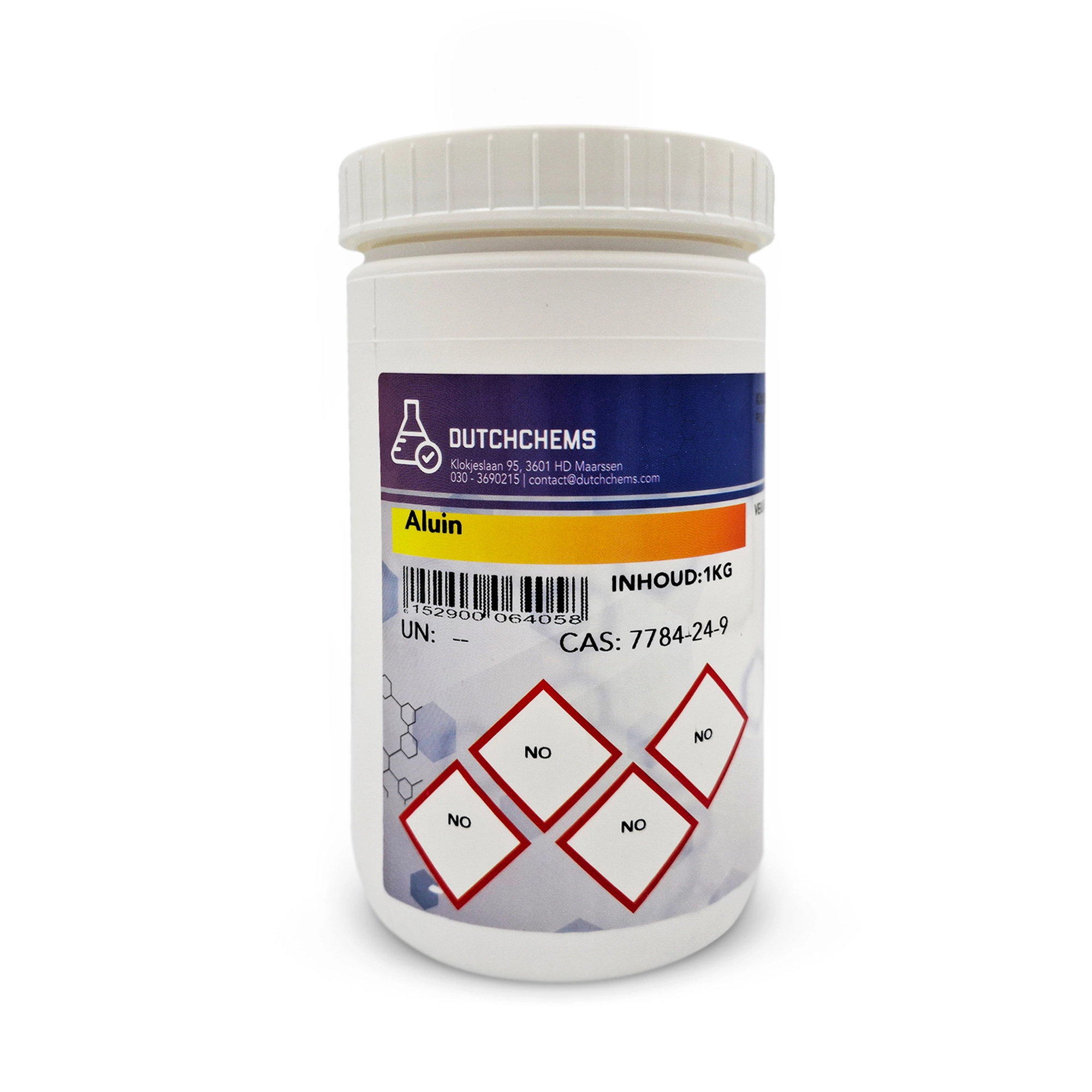Description
What is Alum?
Alum is a naturally occurring chemical compound known as a double salt, consisting of aluminum, sulfate, and an alkali ion such as potassium or ammonium. The most common form is potassium alum with the chemical formula KAl(SO₄)₂·12H₂O. This is a colorless, white crystalline powder that is highly soluble in water. Without further specification, alum is also called potassium aluminum sulfate.
Properties and Uses of Potassium Alum
Alum plays a vital role in various traditional and modern processes thanks to its unique chemical properties. Traditionally, it was used in papermaking to improve its properties. It was added to pulp to strengthen its structure and make the paper more resistant to ink. This reduces the ink absorption of the fibers, allowing for sharper printing. While this application is less common today, it remains a historically important ingredient in the development of the paper industry.
In tanning, potassium alum is an essential tool. It is used in the tanning process to preserve and soften the hides. Its astringent properties stabilize the fibers in the hide, making the leather more supple and resistant to wear. It is primarily used in the production of white leather, giving it a smooth, light finish without dark discoloration.
Alum is frequently used as a mordant in textile dyeing. It improves the adhesion of dyes to the fabric, thus ensuring better colorfastness. Pre-treating fabrics with this substance optimizes the chemical reaction between the fibers and the dye, resulting in more intense and durable colors.
Alum is widely used in water purification. It acts as a coagulant and helps remove dirt particles and other impurities from water. It causes small particles to clump together into larger flocs, which then settle to the bottom or can be easily filtered. This process makes it a widely used substance in the treatment of process and industrial water.
In horticulture, alum is valued for its ability to lower soil pH. Acid-loving plants, such as hydrangea, benefit from the addition of this substance to the soil. By making the soil more acidic, it creates an optimal environment for these plants, which is especially evident in the vibrant colors of hydrangeas.
FREQUENTLY ASKED QUESTIONS – FAQ
Is potassium alum the same as alum?
Yes, potassium alum is a common form of alum. It’s a general term for a group of double salts of aluminum and sulfate, combined with another ion such as potassium or ammonium. Potassium alum (KAl(SO₄)₂·12H₂O) is the most commonly used variety and is often simply called “alum.”
Is Alum Dangerous?
When used correctly, alum is not classified as toxic. It may be irritating upon contact with skin or mucous membranes, especially in sensitive individuals. Avoid inhaling the powder and avoiding contact with eyes.
What forms of alum are there?
The two most common forms are:
- Potassium alum (KAl(SO₄)₂·12H₂O) – widely used in water treatment, textile dyeing, and leather tanning.
- Ammonium alum (NH₄Al(SO₄)₂·12H₂O) – often used in similar processes depending on the specific needs.
Both variants have similar properties, but the choice depends on the application.
Is Alum Poisonous?
Alum is not considered toxic when used normally in industrial applications. However, in large quantities or with prolonged exposure, it can cause irritation to the skin, eyes, or respiratory tract. Therefore, caution is advised when handling this powdered form.
Buy alum
Looking for aluminum? You’ve come to the right place. Order easily online with just one click. Once your order is received, we’ll ensure fast and reliable delivery, so you’ll receive your potassium alum as soon as possible!






 Universal safety glasses
Universal safety glasses 







1 review for Alum – Potassium aluminum sulfate – Potassium alum
There are no reviews yet